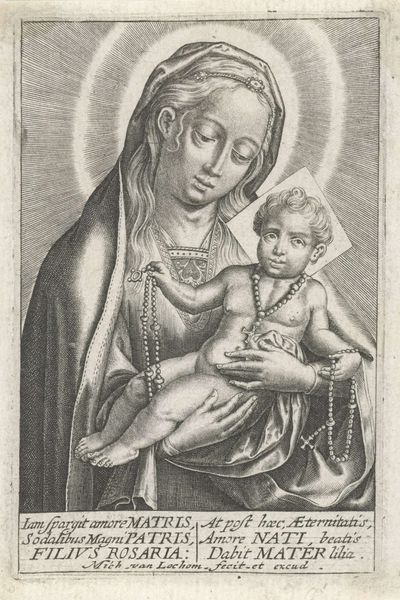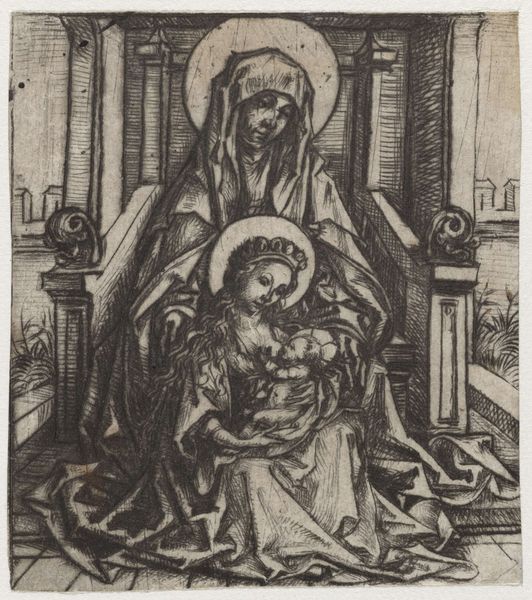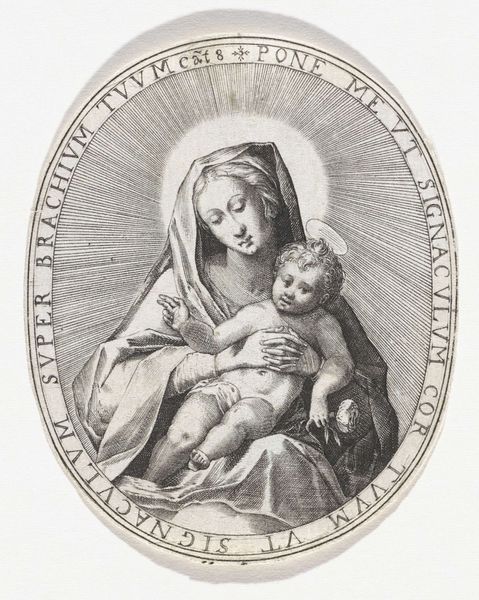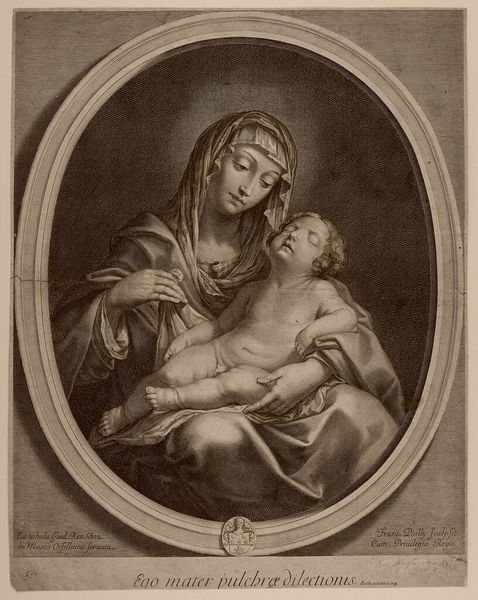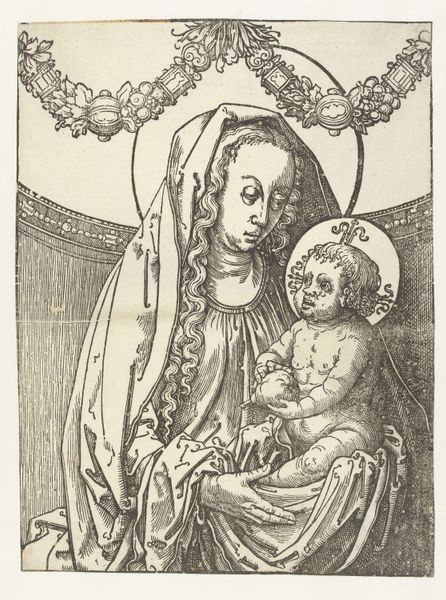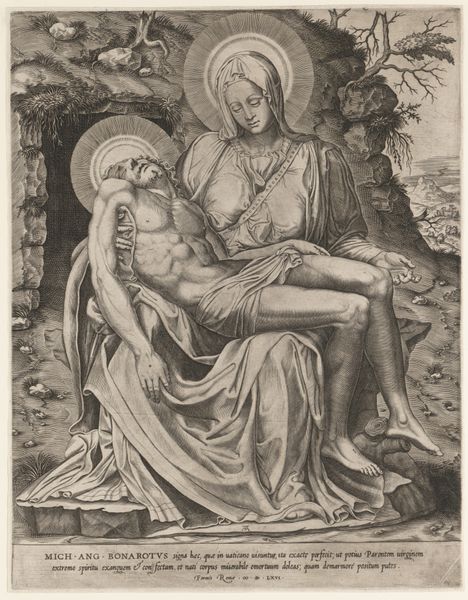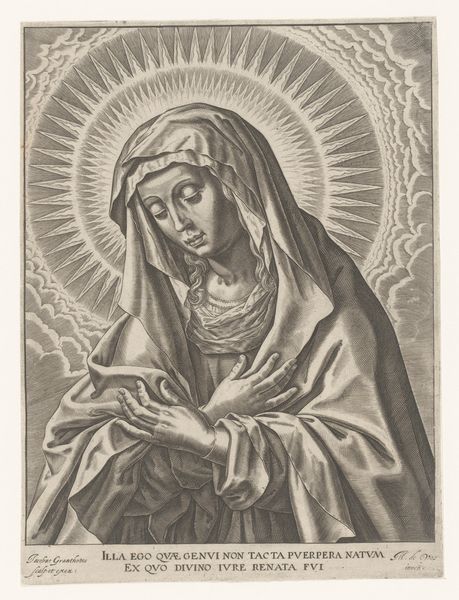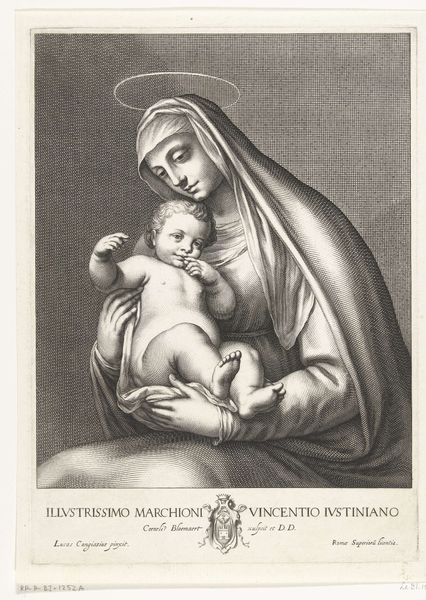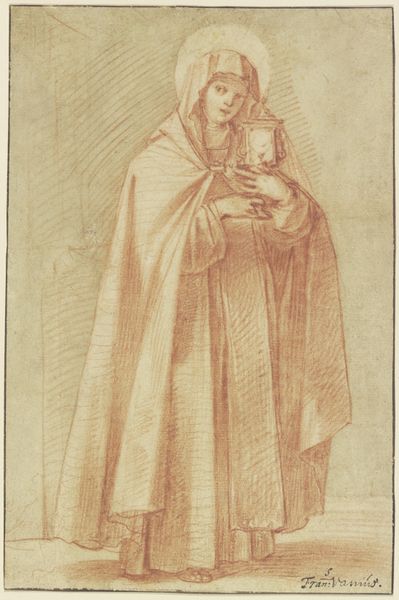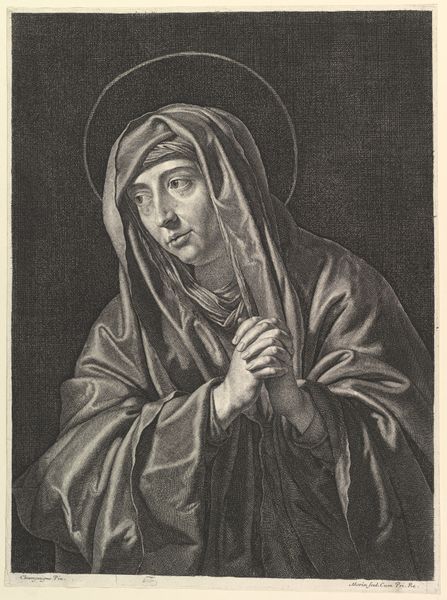
print, engraving
#
portrait
#
medieval
# print
#
old engraving style
#
caricature
#
figuration
#
line
#
history-painting
#
italian-renaissance
#
engraving
Dimensions: height 442 mm, width 331 mm
Copyright: Rijks Museum: Open Domain
Editor: This is "Maria met Kind," or "Mary with Child," an engraving from 1597 by Camillo Graffico. It's rendered in a very linear style, giving it a somewhat stark, graphic feel. I'm curious about its historical context. How should we interpret this work, considering the time it was made and the social currents of that period? Curator: This engraving exists at the intersection of religious devotion and political messaging. Consider where a print like this would circulate: amongst the clergy, sure, but also pilgrims and even the broader populace. The act of distributing images of the Madonna and Child wasn't merely about faith; it reinforced the power and reach of the Church during the Counter-Reformation. Note how Mary’s gaze is directed, and how the Christ child is portrayed. Does that influence its purpose? Editor: Yes, I see your point. The positioning does have a degree of social authority in how she is positioned. The formal elements aren’t just aesthetic choices; they become tools. Do you see the piece as promoting specific doctrine? Curator: Precisely. Think about the Council of Trent and the re-emphasis on the veneration of saints. Images became crucial for reinforcing those theological points. Further, the idealized rendering, albeit with that slightly caricature-esque style you mentioned, aimed to inspire piety and reaffirm traditional values during a time of considerable religious and social upheaval. Does this understanding impact how we appreciate its visual impact today? Editor: Absolutely. It adds depth to what initially seemed like just a conventional religious image. Knowing how it operated within the political and religious landscape makes me appreciate its layered significance. Curator: Agreed. Considering the political dimensions transforms how we perceive even seemingly simple artistic choices. Now we know that every detail likely contributed to its intended function of cultural messaging.
Comments
No comments
Be the first to comment and join the conversation on the ultimate creative platform.
